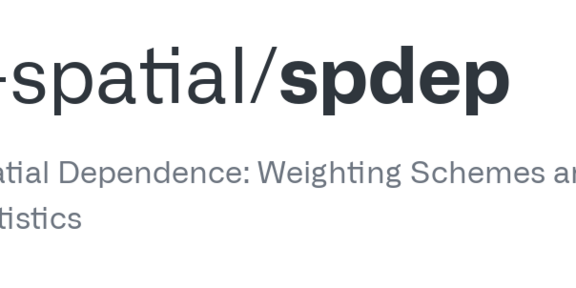New R implementation: Hotspot method for multiscale datasets

We have contributed an implementation of a self-developed hotspot measure to the well-known R package spdep for spatial statistics. The function implements a test statistic for local hotspots on certain pairwise evaluated distance bands presented by Westerholt et al. (2015) (see the full reference below). Like the well-known and widely used hotspot estimator Gi*, the GSi statistic is defined as a standardised measure, which can accordingly be easily interpreted using the standard normal distribution. The idea of the method is to identify hotspots in datasets that include multiple, hard-to-separate processes operating on different scales. This is often the case with complex user-generated datasets such as those from Twitter feeds. For example, a football match might be reflected in tweets from pubs, residences, and the area surrounding the stadium. These illustrative phenomena represent different processes that can be identified at different geometric scales, but whose characterisation can lead to problems if the different scale levels are not taken into account at all stages of a measure. The GSi method enables this identification by fixing a geometric scale band and calculating all statistical quantities needed for statistics, such as mean and variance, exclusively from the relevant observations interacting in the range of the fitted scale band. Furthermore, in each neighbourhood not only the relationships to the respective central unit but all scale-relevant relationships are taken into account. In this way, hotspots on certain scale ranges can be detected independently of other scales.
The method underlying the implementation is published in the International Journal of Geographical Information Science:
Westerholt, R., Resch, B. und Zipf, A. (2015): A local scale-sensitive indicator of spatial autocorrelation for assessing high- and low-value clusters in multi-scale datasets. International Journal of Geographical Information Science, 29 (5), 868–887. DOI: 10.1080/13658816.2014.1002499.
